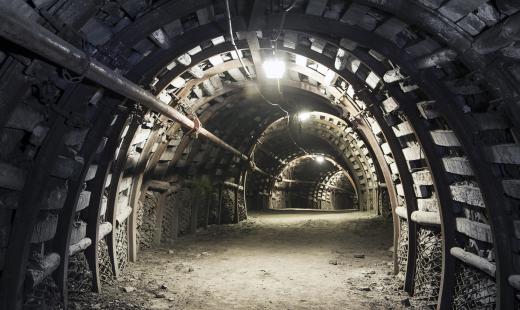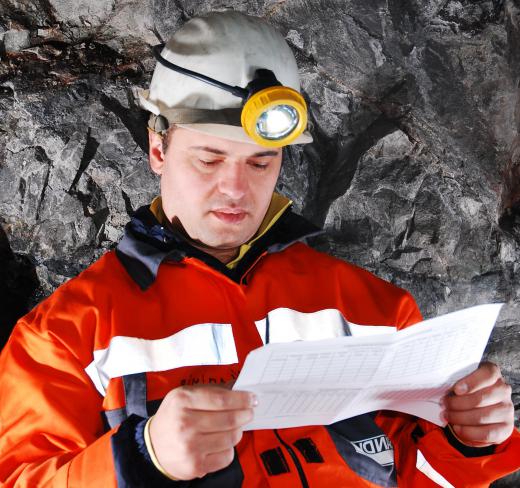A mantrip is a small vehicle or shuttle used to transport miners in and out of a mine each day. These vehicles travel from wash houses on the surface of the earth to mining areas deep underground. Mantrips can be found at coal, metal, and diamond mines, and come in a variety of forms to suit the needs of different types of operations.
The majority of mantrip vehicles travel on permanent rail tracks built into the ground of the mine. These tracks are steeply sloped in many cases, allowing the shuttle to travel very deep below the surface of the earth. The mantrip is operated similar to a cable car, and can be moved into and out of the mine using an overhead cable. The vehicle's operation is controlled by an electric or gas-powered hoist located above the ground.

Some mantrip units do not ride on tracks or rails, but instead use rubber wheels to travel in and out of the mine. These vehicles resemble pickup trucks, and may utilize a diesel or electric engine. A mantrip that does not require rails can travel further into the mine than one operated using a cable hoist. This results in a greater degree of flexibility, but also makes travel more risky and less controlled.

Most mantrips feature a very low profile to allow the vehicle to fit within the low ceiling space characteristic of most mines. They may utilize a wide body design to carry a large number of passengers, or can be shaped like a standard truck or tram. Some feature open sides to allow for easy entry and exit, while others are fully enclosed to protect miners from falling rocks or other hazards. Wire or mesh may be used in place of glass to allow miners and operators to see out of the vehicle.
Many of these vehicles include a number of safety features to protect workers in the notoriously dangerous mining industry. Most have built-in headlights to guide drivers and to alert workers in the mine that the vehicle is coming. Those that operate on a cable system include a series of brakes and safety cables in case the main operating cable breaks. A rubber or sand-filled buffer is often used at the bottom of the mine shaft to cushion the impact if the vehicle loses control.
Mantrips help to cut travel time into and out of the mine, allowing workers to reach work sites more quickly. They also keep workers on a controlled path so they are less likely to get injured on lost in the mine. These vehicles also provide a relatively fast way to exit the mine during an emergency, which can help save lives.
